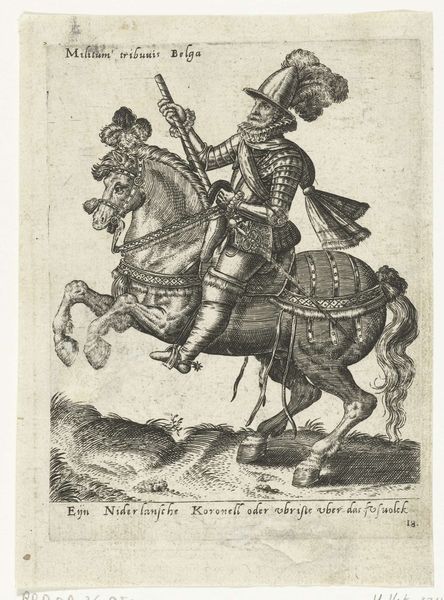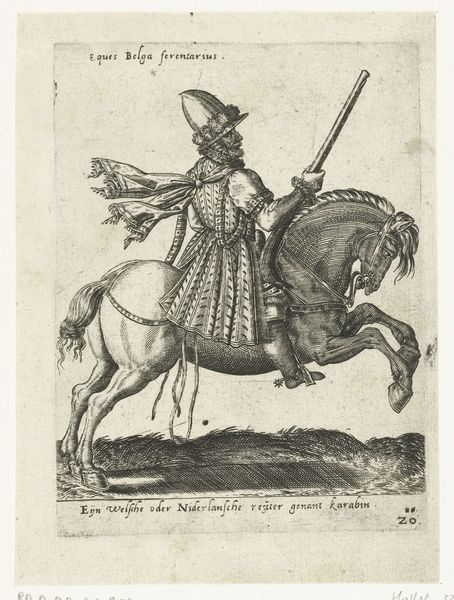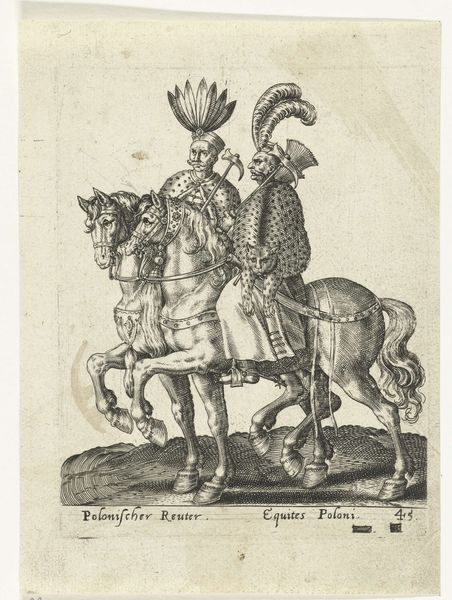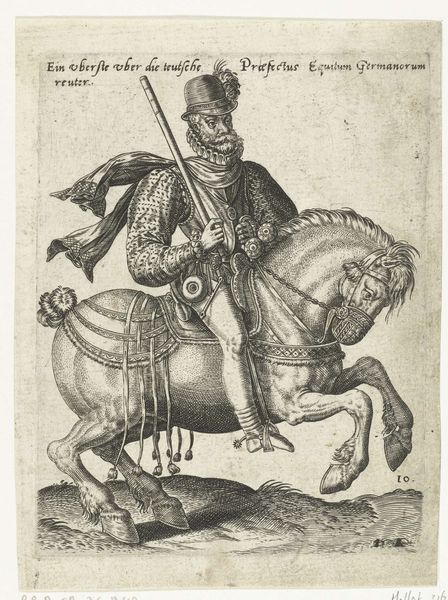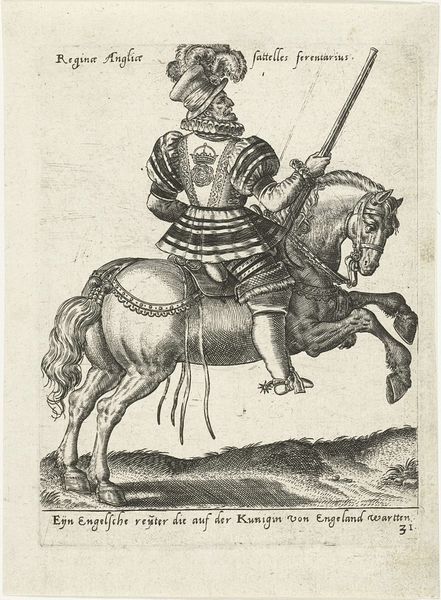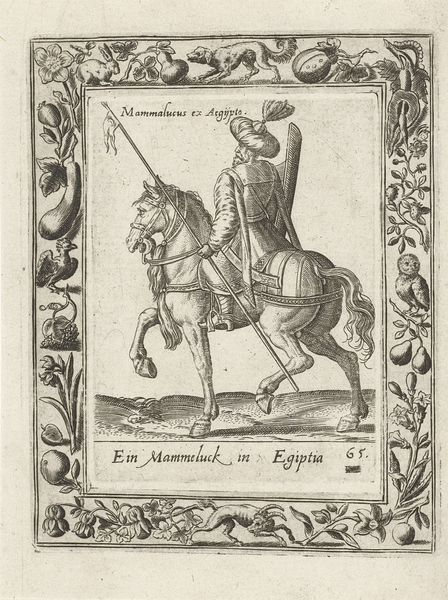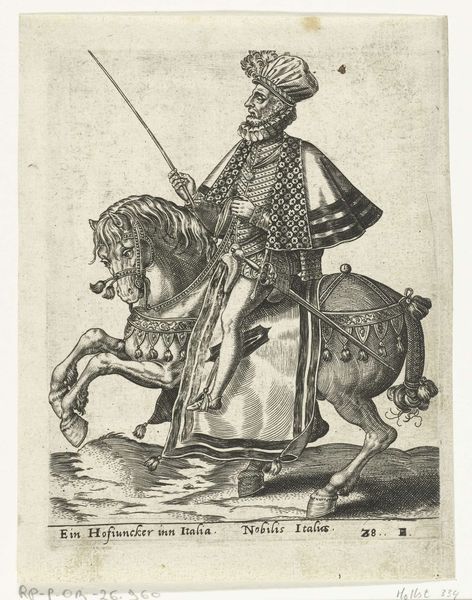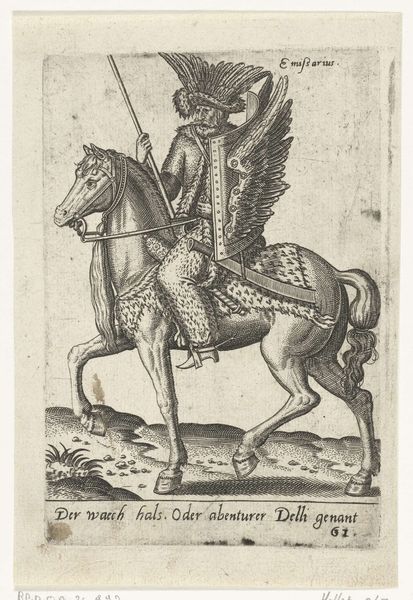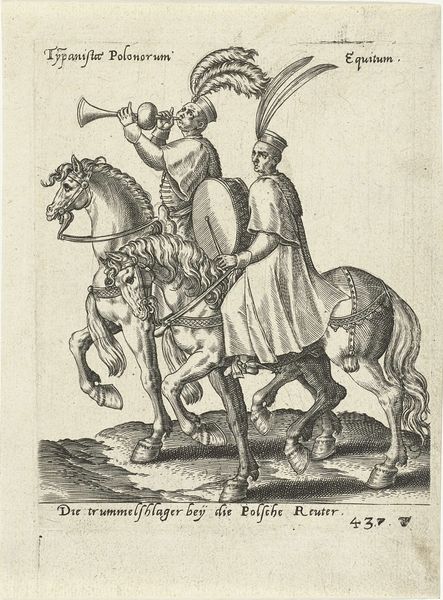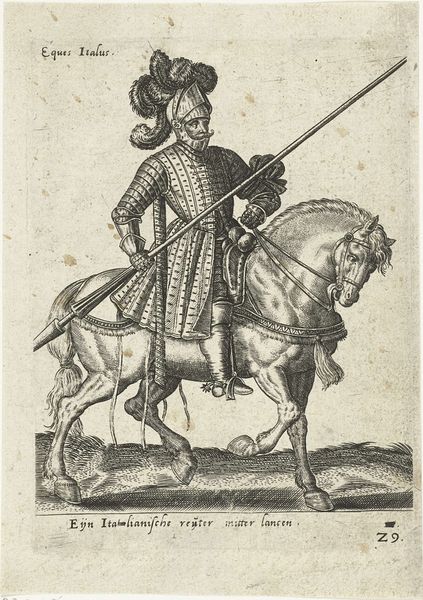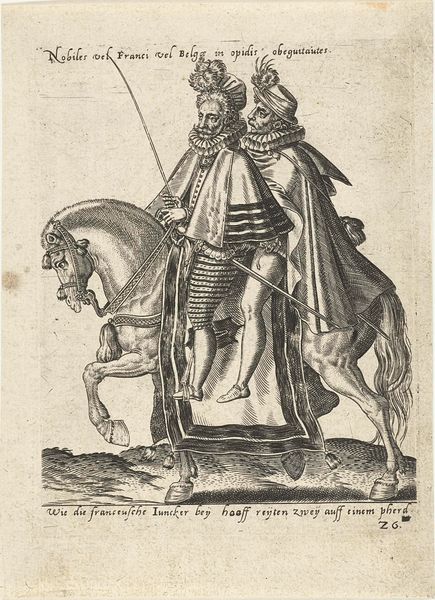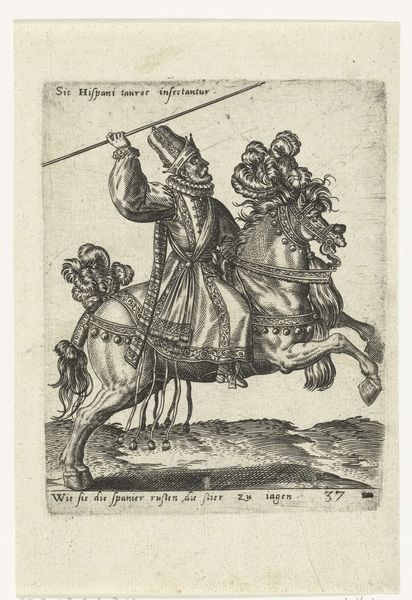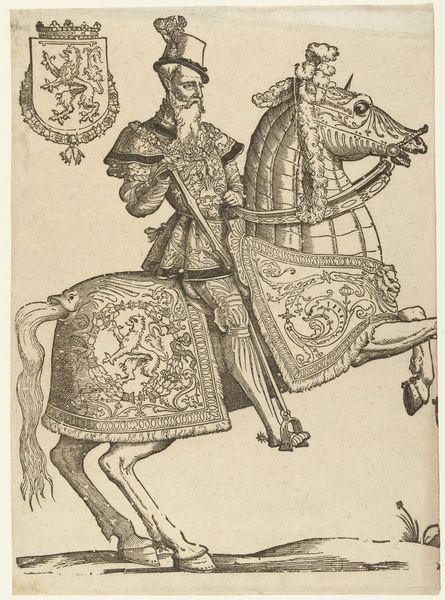
print, engraving
#
portrait
#
dutch-golden-age
# print
#
old engraving style
#
mannerism
#
cityscape
#
history-painting
#
engraving
#
erotic-art
Dimensions: height 151 mm, width 105 mm
Copyright: Rijks Museum: Open Domain
Editor: Here we have "Nederlandse heer te paard," or "Dutch nobleman on horseback," an engraving from 1577 by Abraham de Bruyn, housed here at the Rijksmuseum. I am struck by the detail, the line work. It’s so intricate, especially the horse's musculature and the nobleman’s ornate garments. What stands out to you? Curator: Observe how the composition emphasizes a verticality. The rider's erect posture, the upward gaze of the horse, and the vertical lines of the cityscape beyond draw our eyes upwards. The artist orchestrates the tonal values in each patterned surface: from the horse blanket's circles, to the nobleman's horizontal stripes and lush fur textures. Each of these considered graphic strategies reinforces a sense of elevated status, both literally and metaphorically, wouldn’t you agree? Editor: That makes perfect sense. It is like a tapestry of textures leading your eye up the work. But if the lines give the work this sense of the monumental, how does the fact that it's a print affect our reading? Curator: That's a crucial question. Engravings, as reproducible images, circulated widely. This artwork’s graphic clarity is vital to how we understand its efficacy. Its graphic power ensures it is easily legible, even at a small scale. And, by virtue of its reproducibility, can broadcast the symbolic import more pervasively than a unique painting, for example. Editor: That’s fascinating, thinking about the intent behind choosing to make it reproducible. So it's not just a portrait; it's a statement through form and medium. Curator: Precisely. Form is not merely decorative but a deliberate articulation of power and its diffusion. Editor: I never would have considered that. It seems so obvious once pointed out. Thank you! Curator: My pleasure. Visual analysis sharpens our understanding and reveals intended impact of visual media in early modernity and today.
Comments
No comments
Be the first to comment and join the conversation on the ultimate creative platform.
